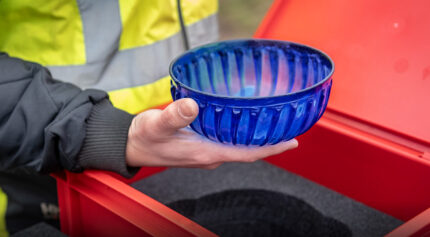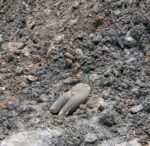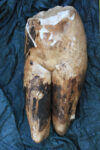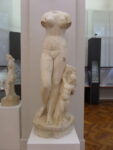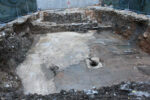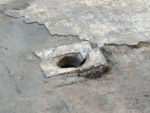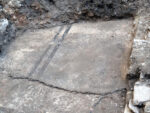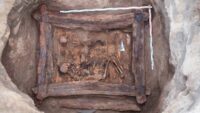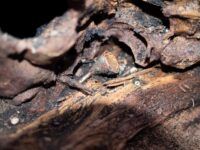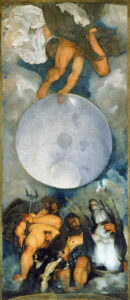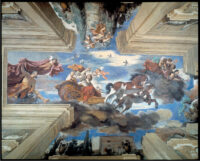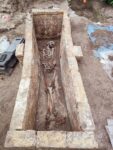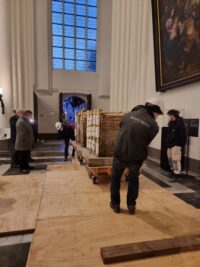Archaeologists excavating the site of a comprehensive housing and green space development in Nijmegen’s Winkelsteeg area have unearthed a spectacular Roman blue glass bowl that is in flawless condition. It is at least 1,800 years old, and there is not a chip or crack on it.
Such dishes were made by allowing molten glass to cool and harden over a mold. The stripe pattern was drawn in when the glass mixture was still liquid. Metal oxide causes the blue color.
This bowl was once a showpiece for early Nijmegen residents. [Lead archaeologist Pepijn] Van de Geer thinks it is a masterpiece that deserves to be displayed in a museum. “I have seen similar glassware in Italian museums.”
Nijmegen was founded as a Roman military camp in the 1st century B.C., and a civilian settlement of the local Batavi peoples formed next to it. By 98, the settlement of Nijmegen was the first city in what is today the Netherlands to receive the designation of municipium (Roman city rights) making its residents Roman citizens.
The bowl was not of local manufacture. It was produced in a workshop of fine glasswares in a large Roman city. The Roman city of Vetera (modern-day Xanten), just over the border in Germania, was known for its glass production, and it too was in Batavi territory so there would have been established lines for the exchange of goods. It is of such high quality, however, that it could well have originated in Italy and been traded north, or have been acquired by a Batavian legionary who brought it home with him when he retired from the Roman army.
The Winkelsteeg excavation has also unearthed graves from the Roman settlement and a smattering of grave goods, including vessels, cups and jewelry. Remains of dwellings are sparse — mostly traces of wood construction — but archaeologists are documenting residues and soil discoloration to draw up a map of the neighborhood’s houses.
